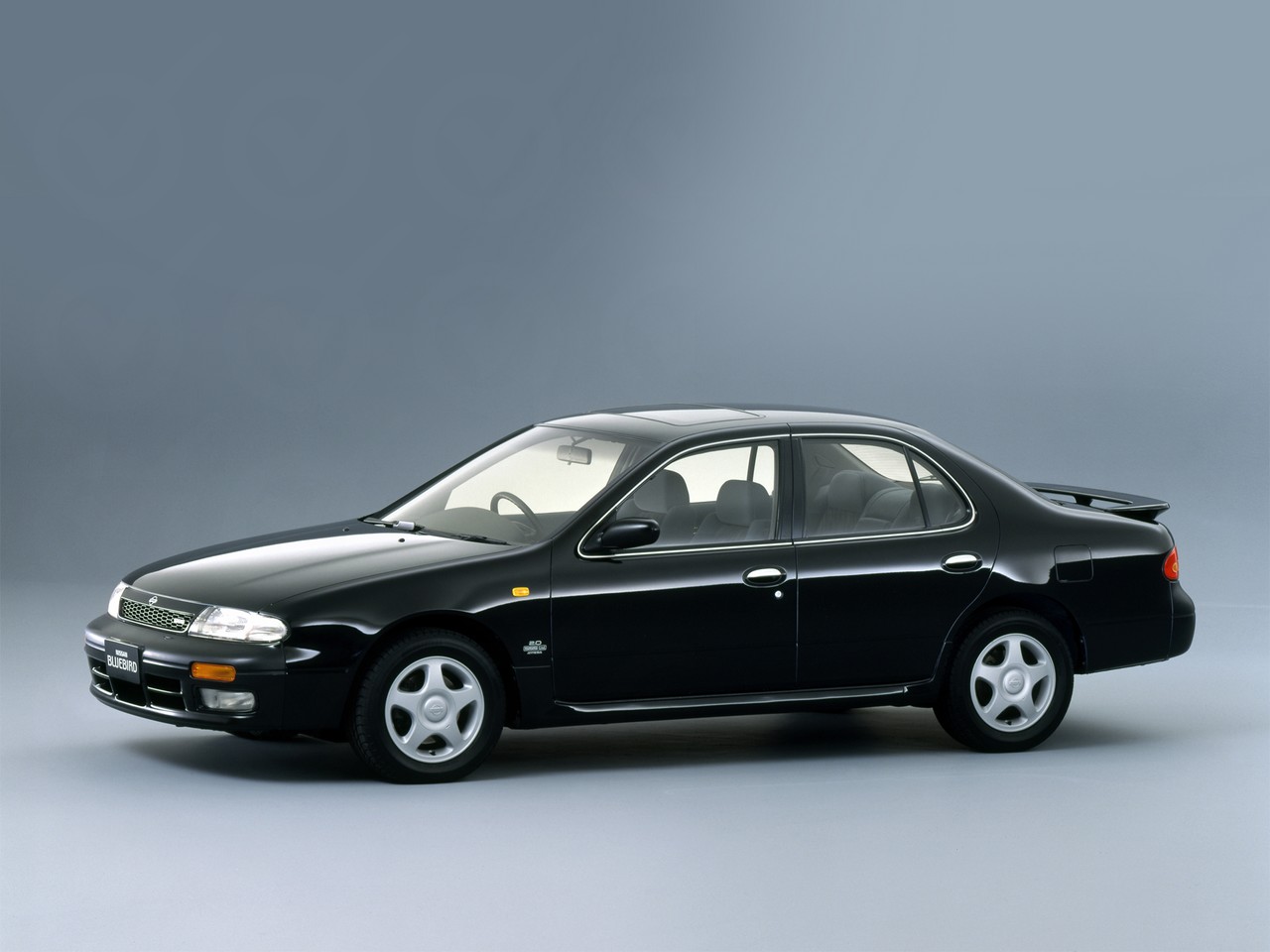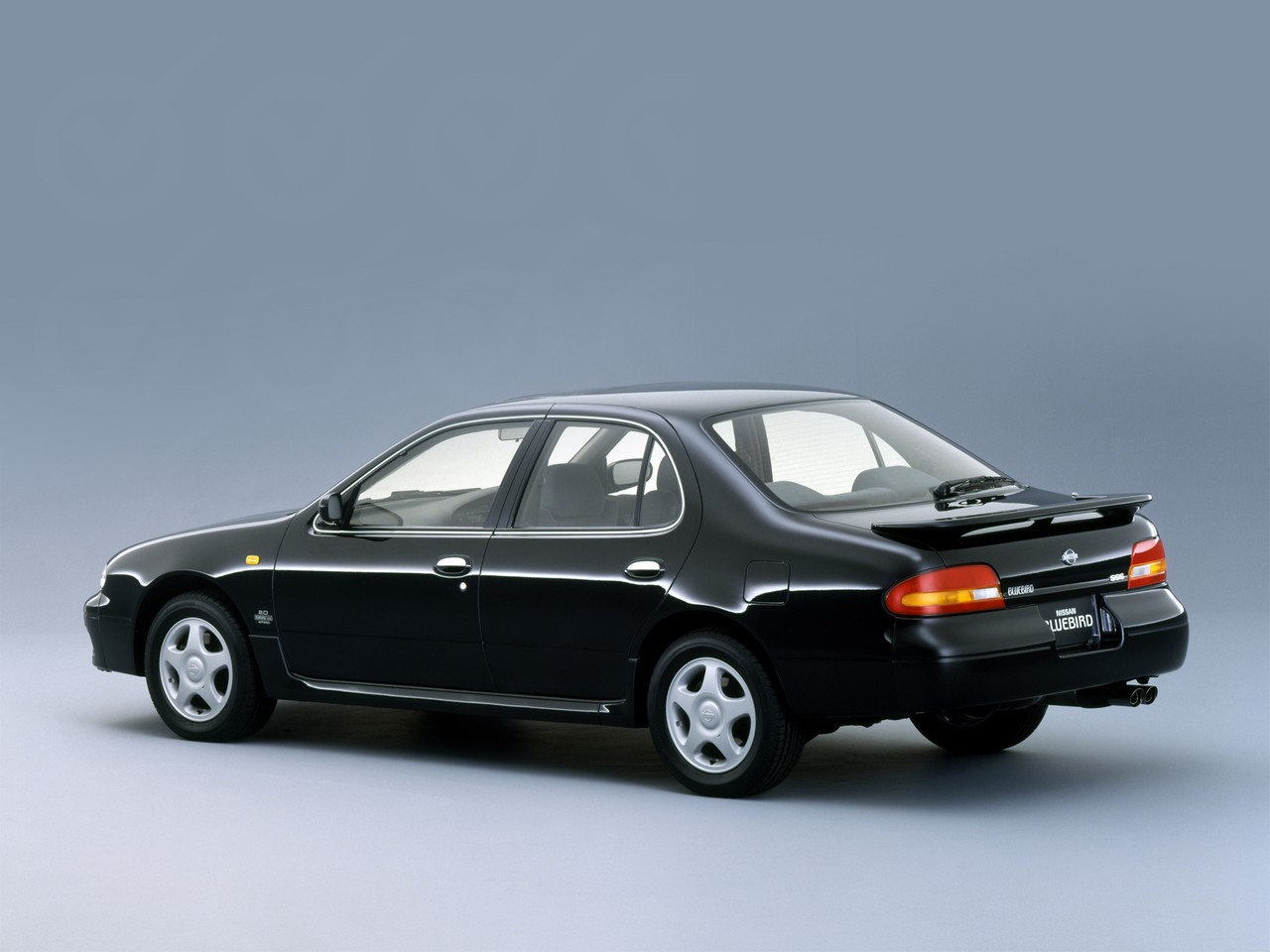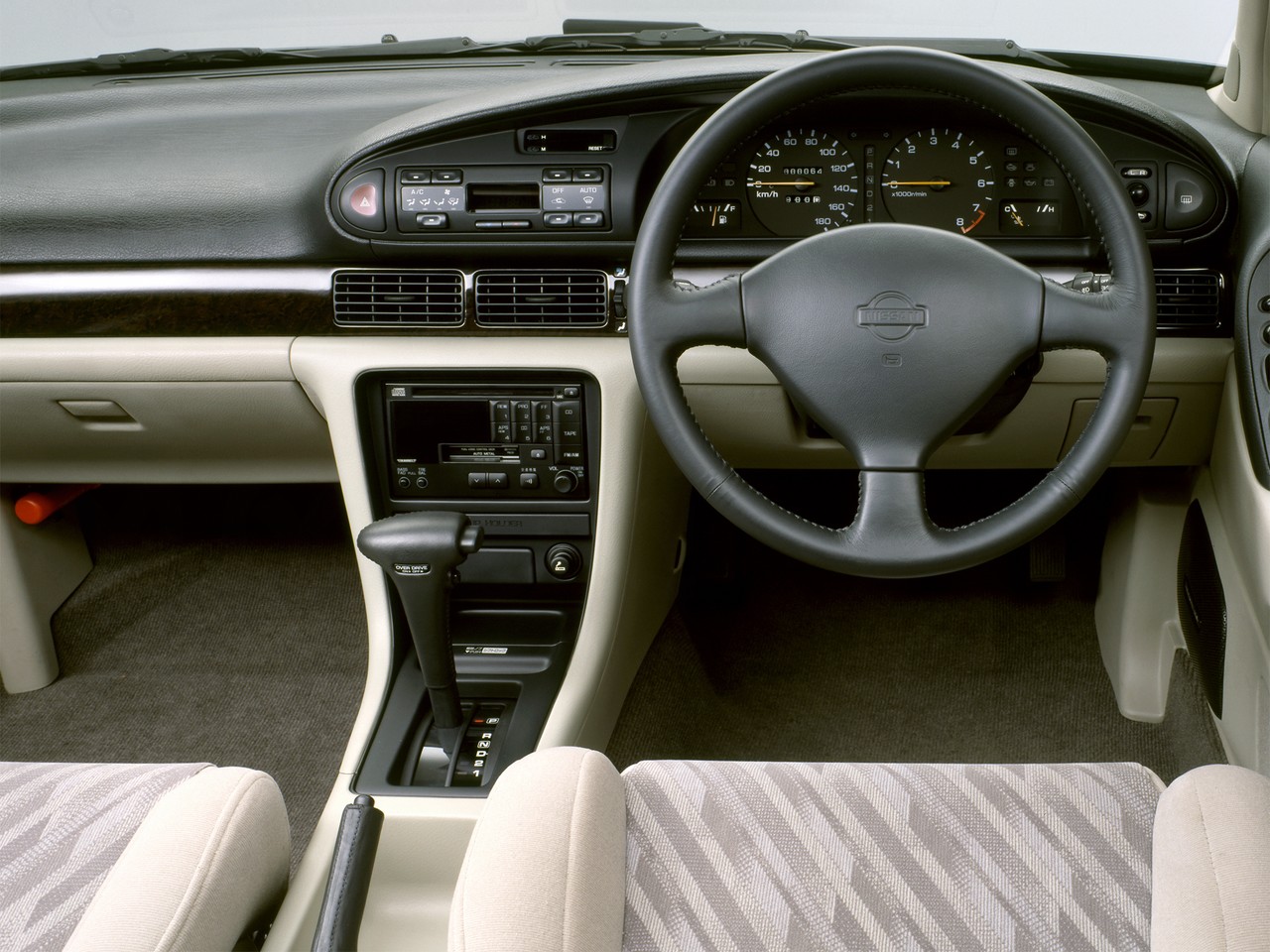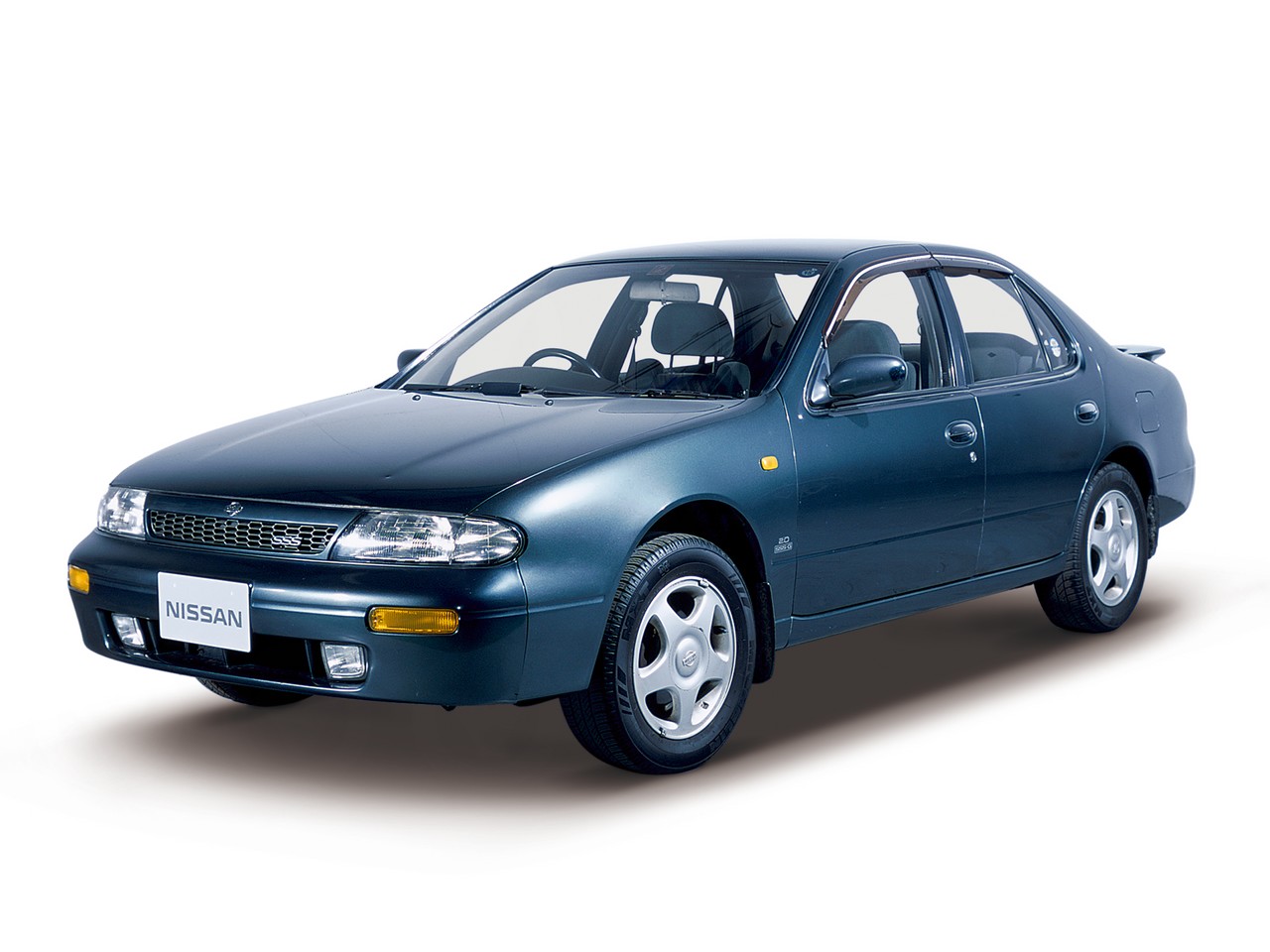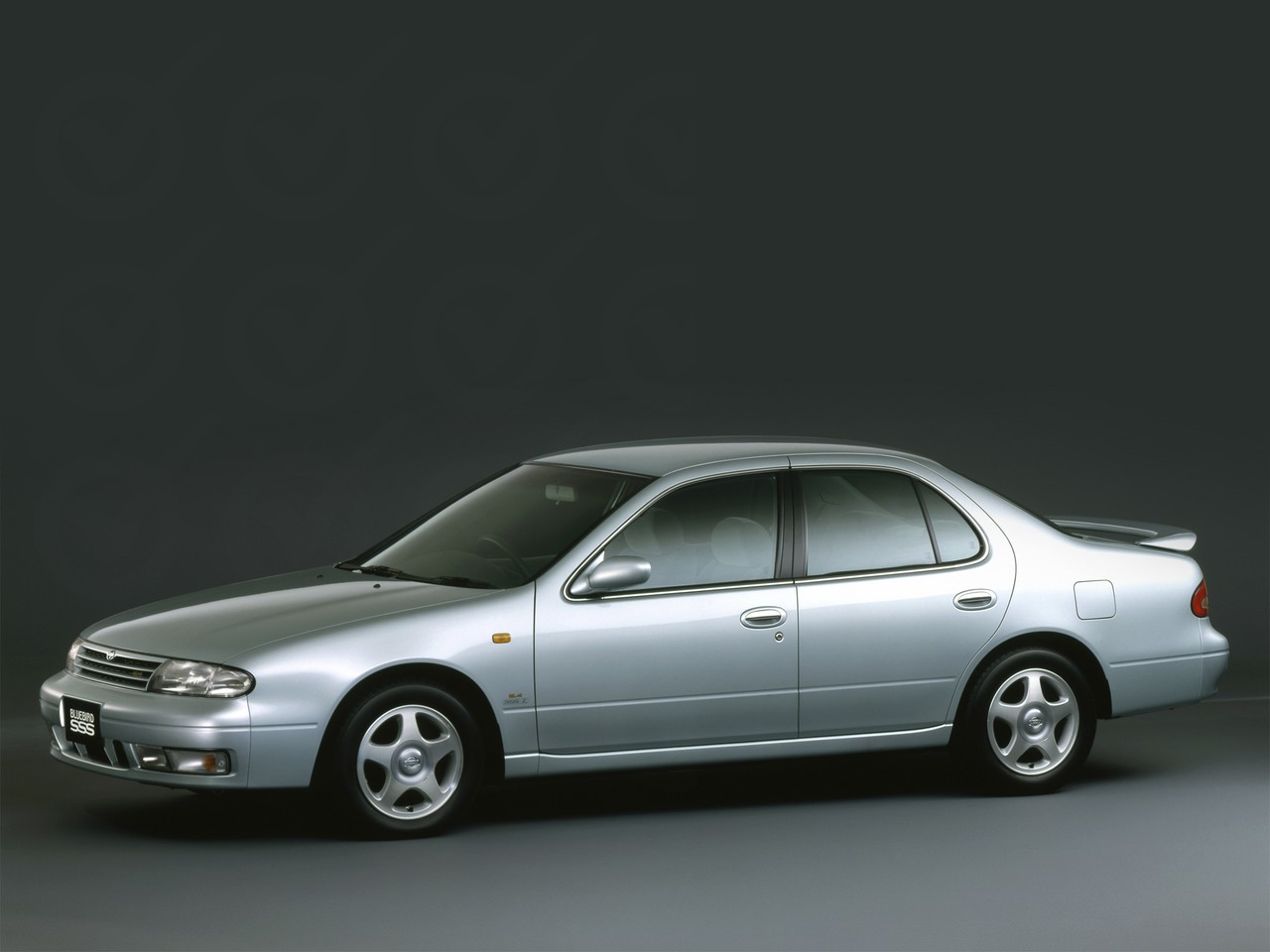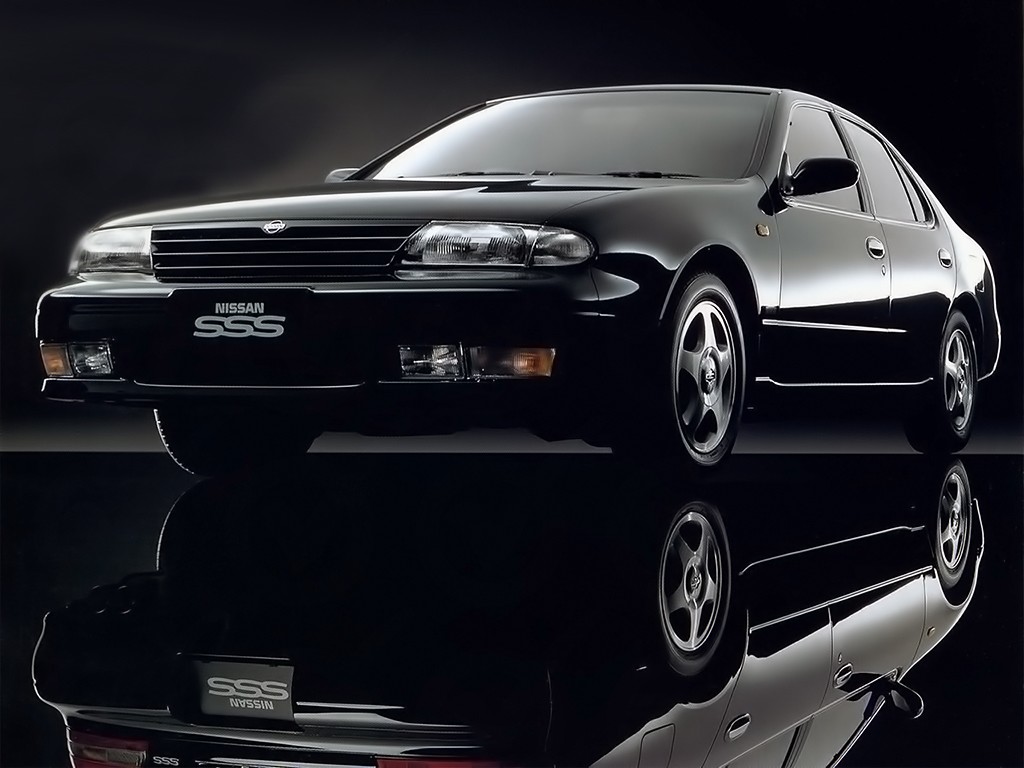
- Refined economical 2.4-litre petrol engine
- Impressive ride/handling balance
- Refined, quiet interior
- Supportive front seats
- Lack of safety equipment
- Small boot opening
- Rear seat doesn’t fold
Review: Nissan U13.I Bluebird (1993-95)
Overview
Released in October 1993, the Nissan U13 Series I (U13.I) Bluebird was a mid-size sedan. Manufactured in Oppama, Japan, the front-wheel drive U13 Bluebird was powered b a 2.4-litre four-cylinder petrol engine that was mated to either a four-speed automatic or five-speed manual transmission. The U13 Bluebird range consisted of LX, SSS and Ti variants.
KA24DE engine
The 2.4-litre KA24DE petrol engine had a cast iron block, an aluminium cylinder head, electronic fuel injection, double overhead camshafts, four valves per cylinder and a compression ratio of 9.2:1.
Dimensions and suspension
Styled in California, the U13 Bluebird was 4585 mm long, 1695 mm wide, 1420 mm tall and had a 2620 mm long wheelbase. Furthermore, the Bluebird had MacPherson strut suspension front and rear with coil springs and anti-roll bars.
Super Toe Control
The Bluebird was fitted with a viscous limited slip differential as standard and the rear suspension included Nissan’s ‘Super Toe Control’, a simplified form of four wheel steering whereby compliant rear suspension bushes enabled the rear wheels to turn in by up to one degree under braking and follow the direction of the front wheels when cornering. As such, the system was designed to improve stability during high speed cornering and evasive manoeuvres.
| Engine | Variant | Trans. | Peak power | Peak torque |
|---|---|---|---|---|
| 2.4-litre petrol I4 (KA24DE) | LX, SSS |
5sp man., 4sp auto |
112 kW at 5600 rpm | 210 Nm at 4400 rpm |
| Ti | 4sp auto |
Safety equipment
Neither airbags nor ABS were fitted as standard for the U13 Bluebird. For the Bluebird SSS and Ti, ABS was available as an extra-cost option.
Features
Standard features for the Bluebird LX included 15-inch alloy wheels with 205/60 R15 Dunlop tyres, four speaker sound system, air conditioning, velour upholstery, cruise control, central locking, front cornering lamps, power windows, power mirrors and a tilt adjustable steering wheel.
Compared to the LX, the Bluebird SSS was further equipped with a 160 watt sound system with six speakers and an in-dash CD player, climate control air conditioning, contoured front sports seats, front fog lights, a three-spoke leather-wrapped steering wheel, rear wiper and a digital head-up windscreen display. Displayed in the lower right corner of the windscreen, the digital display projected information such as speed, messages for turn signal operation, door ajar and systems checks. Visually, the SSS variant could be identified by its side sills and rear spoiler.
Compared to the LX, the Bluebird Ti was distinguished by its 160 watt sound system with six speakers and an in-dash CD player, climate control air conditioning, front fog lights, a leather-wrapped steering wheel, power sunroof and woodgrain interior trim.
Review: Nissan U13.II Bluebird (1995-97)
Overview
Released in April 1995, the U13 Series II (U13.II) Bluebird introduced additional safety equipment and subtle cosmetic updates.
Visually, the U13.II Bluebird could be identified by its new front grille and badging, while new paint finishes were also introduced. Inside, a seatbelt warning light was added.
| Engine | Variant | Trans. | Peak power | Peak torque |
|---|---|---|---|---|
| 2.4-litre petrol I4 (KA24DE) | LX, SSS |
5sp man., 4sp auto |
112 kW at 5600 rpm | 210 Nm at 4400 rpm |
| Ti | 4sp auto |
Safety equipment
Standard safety equipment for the U13.II Bluebird was extended to include a driver’s airbag.
Features
Compared to its U13.I predecessor, standard features for the LX variants no longer included cruise control. For the SSS and Ti variants, however, standard features were unchanged.
Related links
